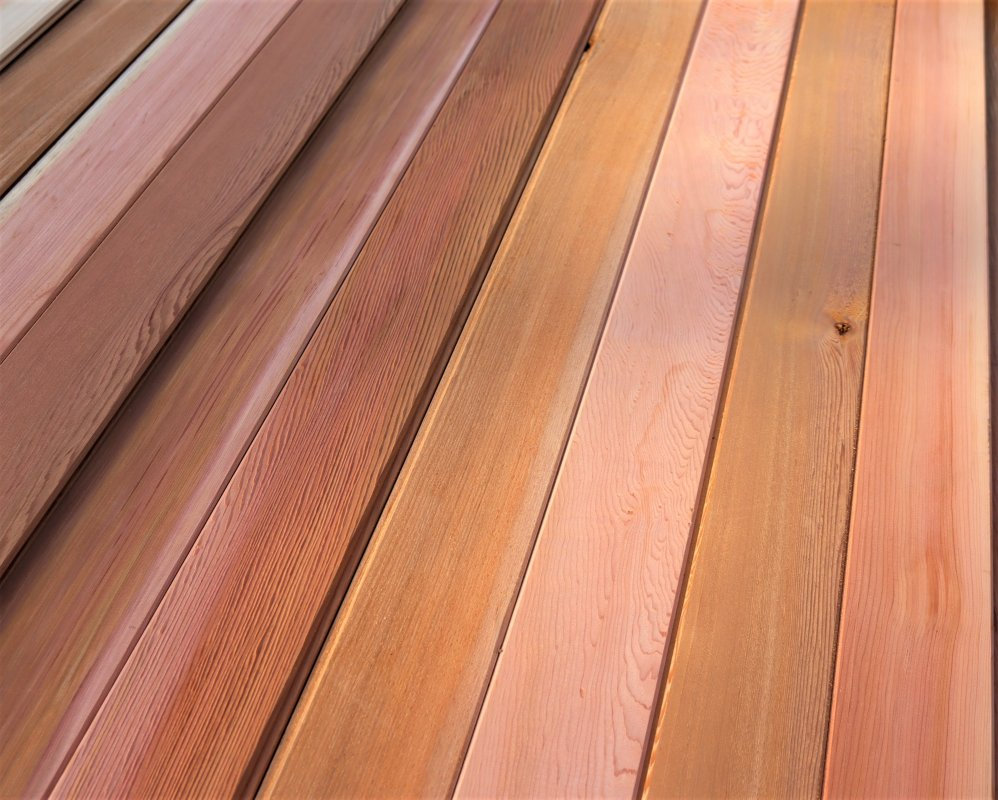
Western Red Cedar vs. Yellow Cedar
If you’re in the market for quality outdoor wood, you’ve probably come across Western Red Cedar and Yellow Cedar. Both are popular choices for decking, siding, and other outdoor applications. But which one should you choose?
Western Red Cedar and Yellow Cedar have distinct differences that can affect their performance and appearance in various outdoor settings.
In this article, we’ll take a closer look at these two types of cedar and help you make an informed decision on which one is best for your project.
Background on Western Red Cedar
Origin and Physical Properties
Western Red Cedar is a premium slow-growth timber abundant in Western Canada, specifically in British Columbia. Due to its natural oils, the Western Red Cedar is insect and decay-resistant, as well as durable and weather-resistant. Hence, it is a popular choice for building and exports. It is twice as stable as other softwood species and must not be heat-treated before exporting.
Uses and Application
Western Red Cedar yields a larger variety of dimensional lumber. This makes it a versatile material for various applications such as siding, decks, fences, planters, screens, and garden furniture. Due to its beauty and versatility, Western Red Cedar lumber is used in outdoor building projects meant to make a statement. Its rich, classic look catches the eye in all its applications. It also has a red tint that gives it its name. Its uniformity in color means that it still looks good even with rough grades. This makes it a popular choice for high-end patio covers and other eye-catching projects.
Background on Yellow Cedar
Origin and Physical Properties
Yellow Cedar, or Cypress, is a hard, solid tree with exceptional longevity. Despite its name, Yellow Cedar is not a cedar tree but a cypress tree. It is highly valued commercially due to its straight grain, yellow color, and high decay resistance.
This durable softwood is grown in specific regions of Alaska and Canada, making it relatively uncommon in other parts of North America. Its yellow cast provides a light, neutral base that looks great, both sealed or stained and its density gives it even greater durability than Western Red Cedar.
Uses and Application
Yellow Cedar is ideal for all types of joinery and carpentry, such as boat building and exterior projects like bridges, decking, stairs, and landscaping.
Additionally, the Yellow Cedar is an appealing and versatile wood that is optimal for applications that require both durability and an elegant look. This is one of the reasons why it is commonly used as a visible structural accent in Japanese architecture.
Japanese architecture also uses it for framing temples and other structures.
Comparing Western Red Cedar and Yellow Cedar
Appearance and Color
Western Red Cedar is renowned for its warm reddish-brown color, with beautiful variations that can include streaks of salmon pink, dark red, and dark brown. Its rich, characterful color makes it a favorite among designers, architects, and homeowners.
In contrast, Yellow Cedar has a uniform pale yellow-white color with a typically straight grain. Its clean, airy appearance can add elegance to any outdoor space. While it may not have the same warmth and character as Western Red Cedar, Yellow Cedar can be treated with a suitable stain, such as Owatrol Textrol HES (Cedar), to achieve a similar look.
Moreover, Yellow Cedar is a cost-effective option for those who desire the popular look of Western Red Cedar. If left untreated with a UV protectant stain, both species will weather to a silvery-grey color, which can be desirable for a rustic, weathered look.
Durability and Resistance to Weather and Insects
Both Yellow Cedar and Western Red Cedar are highly durable, and they have excellent dimensional stability. They both take stains, oils, and treatments exceptionally well due to their pitch and resin-free nature, making them low maintenance.
Yellow Cedar is exceptionally dense, providing excellent scratch and impact resistance. So, for indoor use, Yellow Cedar is the more physically durable option.
However, if you’re looking for durability in terms of outdoor weather resistance, then Western Red Cedar is the better choice.
- Generally, Western Red Cedar projects are more expensive due to their more popular reddish-brown color and attractive appearance.
Choosing between Western Red Cedar and Yellow Cedar
At the end of the day, choosing between Western Red Cedar and Yellow Cedar comes down to personal preference and the specific needs of your project.
Both kinds of wood have their unique strengths and characteristics that make them great choices for various applications.
At Longhouse Specialty, we offer a wide range of high-quality custom-cut Western Red or Yellow Cedar products to meet your needs. We also provide pre stained cedar for decking. Our team of experts can certainly help you select the perfect wood for your project. Contact us today to find out how we can help you.
